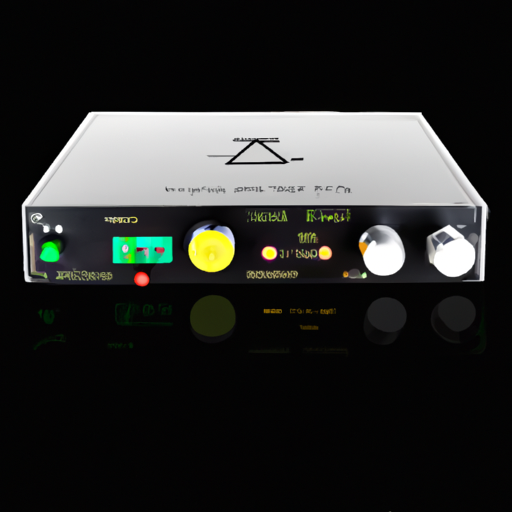The off-the-shelf digital-to-analog converter (DAC) is an important device that converts digital signals into analog signals and is widely used in various fields such as communications, industrial control, medical equipment, etc. When selecting an off-the-shelf DAC, multiple factors need to be considered, including resolution, speed, accuracy, power consumption, interface type, etc. This article will introduce in detail how to select an off-the-shelf DAC from these aspects.

First of all, resolution is one of the important considerations for selecting an off-the-shelf DAC. Resolution determines the accuracy of the analog signal that the DAC can output, and is usually expressed in the number of bits, such as 8 bits, 10 bits, 12 bits, etc. The higher the resolution, the higher the accuracy of the output signal, but the corresponding cost will also increase. Therefore, when selecting an off-the-shelf DAC, it is necessary to determine the required resolution based on the specific application requirements.
Secondly, speed is also an important consideration when choosing an off-the-shelf DAC. Speed refers to how fast the DAC can convert digital signals into analog signals, usually expressed as a sampling rate, such as 100MSPS, 200MSPS, etc. The higher the speed, the wider the signal frequency range that the DAC can handle, but the corresponding power consumption will also increase. Therefore, when choosing an off-the-shelf DAC, it is necessary to determine the required speed based on the specific application requirements.
Accuracy is another important consideration when selecting an off-the-shelf DAC. Accuracy refers to the error between the DAC output signal and the ideal output signal, usually expressed as a percentage or LSB (least scale value). The higher the accuracy, the more accurate the output signal, but the corresponding cost will also increase. Therefore, when selecting an off-the-shelf DAC, it is necessary to determine the required accuracy based on the specific application requirements.
In addition, power consumption is also an important consideration when choosing an off-the-shelf DAC. Power consumption refers to the amount of electrical energy consumed by the DAC when it is operating, usually expressed in watts (W). The lower the power consumption, the higher the energy efficiency of the DAC, but the corresponding performance may be affected to a certain extent. Therefore, when choosing an off-the-shelf DAC, it is necessary to determine the required power consumption based on the specific application requirements.
Finally, the interface type is also an important consideration when choosing a spot DAC. Interface types include parallel interface, serial interface, SPI interface, etc. Different interface types are suitable for different application scenarios. When choosing a spot DAC, you need to determine the required interface type based on the specific application requirements.
In summary, when choosing an off-the-shelf DAC, you need to consider multiple factors such as resolution, speed, accuracy, power consumption, interface type, etc., and determine the most suitable DAC model based on specific application requirements. I hope this article can help readers better choose off-the-shelf DACs and improve system performance and stability.
The off-the-shelf digital-to-analog converter (DAC) is an important device that converts digital signals into analog signals and is widely used in various fields such as communications, industrial control, medical equipment, etc. When selecting an off-the-shelf DAC, multiple factors need to be considered, including resolution, speed, accuracy, power consumption, interface type, etc. This article will introduce in detail how to select an off-the-shelf DAC from these aspects.

First of all, resolution is one of the important considerations for selecting an off-the-shelf DAC. Resolution determines the accuracy of the analog signal that the DAC can output, and is usually expressed in the number of bits, such as 8 bits, 10 bits, 12 bits, etc. The higher the resolution, the higher the accuracy of the output signal, but the corresponding cost will also increase. Therefore, when selecting an off-the-shelf DAC, it is necessary to determine the required resolution based on the specific application requirements.
Secondly, speed is also an important consideration when choosing an off-the-shelf DAC. Speed refers to how fast the DAC can convert digital signals into analog signals, usually expressed as a sampling rate, such as 100MSPS, 200MSPS, etc. The higher the speed, the wider the signal frequency range that the DAC can handle, but the corresponding power consumption will also increase. Therefore, when choosing an off-the-shelf DAC, it is necessary to determine the required speed based on the specific application requirements.
Accuracy is another important consideration when selecting an off-the-shelf DAC. Accuracy refers to the error between the DAC output signal and the ideal output signal, usually expressed as a percentage or LSB (least scale value). The higher the accuracy, the more accurate the output signal, but the corresponding cost will also increase. Therefore, when selecting an off-the-shelf DAC, it is necessary to determine the required accuracy based on the specific application requirements.
In addition, power consumption is also an important consideration when choosing an off-the-shelf DAC. Power consumption refers to the amount of electrical energy consumed by the DAC when it is operating, usually expressed in watts (W). The lower the power consumption, the higher the energy efficiency of the DAC, but the corresponding performance may be affected to a certain extent. Therefore, when choosing an off-the-shelf DAC, it is necessary to determine the required power consumption based on the specific application requirements.
Finally, the interface type is also an important consideration when choosing a spot DAC. Interface types include parallel interface, serial interface, SPI interface, etc. Different interface types are suitable for different application scenarios. When choosing a spot DAC, you need to determine the required interface type based on the specific application requirements.
In summary, when choosing an off-the-shelf DAC, you need to consider multiple factors such as resolution, speed, accuracy, power consumption, interface type, etc., and determine the most suitable DAC model based on specific application requirements. I hope this article can help readers better choose off-the-shelf DACs and improve system performance and stability.









